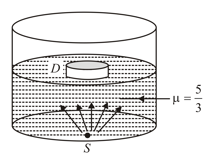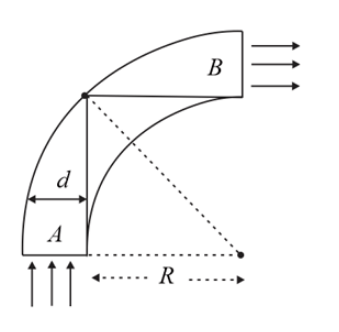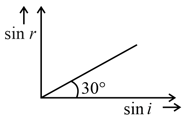B M Sharma Solutions for Chapter: Ray Optics, Exercise 2: DPP
B M Sharma Physics Solutions for Exercise - B M Sharma Solutions for Chapter: Ray Optics, Exercise 2: DPP
Attempt the free practice questions on Chapter 1: Ray Optics, Exercise 2: DPP with hints and solutions to strengthen your understanding. Chapterwise/Topicwise Daily Practice Problems (DPP) Optics and Modern Physics JEE Main & Advanced solutions are prepared by Experienced Embibe Experts.
Questions from B M Sharma Solutions for Chapter: Ray Optics, Exercise 2: DPP with Hints & Solutions
A ray of light travels from an optically denser to rarer medium. The critical angle for the two media is . The maximum possible deviation of the ray will be
A point source of light is placed at the bottom of a vessel containing a liquid of refractive index . A person is viewing the source from above the surface. There is an opaque disc of radius floating on the surface of the liquid. The centre of the disc lies vertically above the source . The liquid from the vessel is gradually drained out through a tap. The maximum height of the liquid for which the source cannot be seen at all from the above is

Light enters at an angle of incidence in a transparent rod of refractive index . For what value of the refractive index of the material of the rod the light once entered into it will not leave it through its lateral face whatsoever be the value of angle of incidence?
An optical fibre consists of core of which is surrounded by a cladding of . A beam of light enters from air at an angle with axis of fibre. The highest for which ray can be travelled through fibre is

A rod of glass and of the square cross-section is bent into the shape as shown in the figure. A parallel beam of light falls on the plane flat surface as shown in the figure. If is the width of a side and is the radius of a circular arc, then for what maximum value of light entering the glass slab through surface emerges from the glass through ?

A ray of light travels from a medium of refractive index to air. Its angle of incidence in the medium is , measured from the normal to the boundary, and its angle of deviation is is plotted against . Which of the following best represents the resulting curve?
The apparent depth of water in a cylindrical water tank of diameter is reducing at the rate of when water is being drained out at a constant rate. The amount of water drained in is ( is the refractive index of air and is the refractive index of water)
When light is incident on a medium at angle and refracted into a second medium at an angle , the graph of verses is shown. From this, one can conclude that

